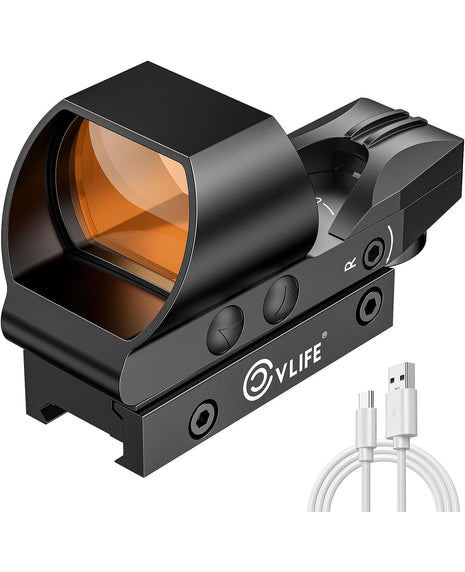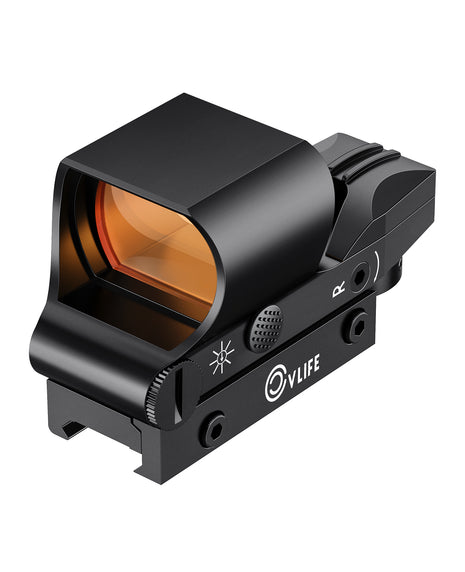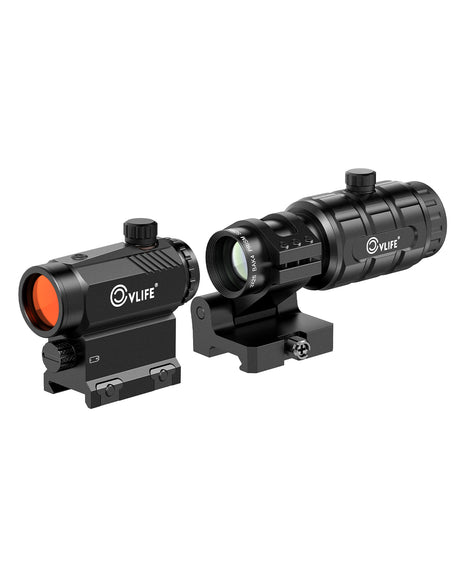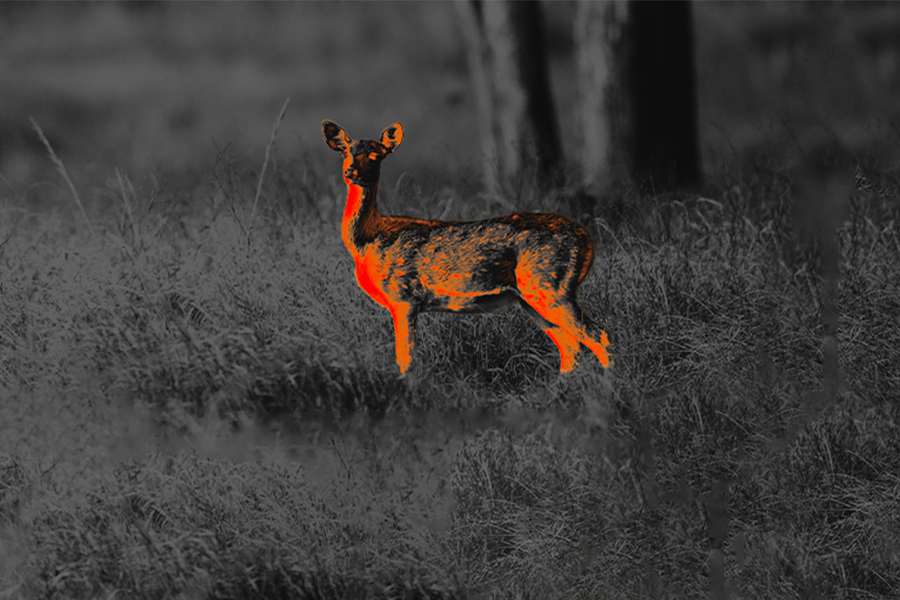Why Your Rifle Optic Matters More Than Ever
Optics shape how you engage targets — they influence speed, accuracy, and confidence on the range or in the field. Industry data shows continued demand for modern sporting rifles and optics as a category, and LPVO/red-dot combos have become popular because they combine speed and reach.
What you'll learn in this guide
- When to pick a red dot vs a LPVO ✅
- How mounting & eye-relief change your real-world accuracy ✅
- Step-by-step zeroing advice (25/50 yard guidance + practical tips) ✅
- How these CVLIFE optics fit different rifle platforms ✅
Understanding the Main Types of Rifle Optics
Red Dot Sights — Fast target acquisition ⚡
Red dots offer a single-plane aiming solution: you place the dot on the target and press the trigger. They are lightweight, robust, and ideal for close-quarters, run-and-gun scenarios or when both-eyes-open shooting speed matters. Red dots pair well with speed-focused platforms like PCCs and lightly-built AR carbines. For police and tactical programs, training protocols increasingly include red dots because they reduce target acquisition time.
LPVO Scopes — 1× speed + 6× versatility 🔭
A Low Power Variable Optic (LPVO) — commonly 1–6× or 1–8× — gives a zeroed 1× setting for speed and variable magnification for medium-range precision. The 1–6× configuration is especially popular because it covers CQB to 300+ yard work with minimal tradeoffs.
Key differences at a glance
| Feature | Red Dot | LPVO |
|---|---|---|
| Speed | Excellent | Very good (at 1×) |
| Versatility | Limited | High |
| Weight | Light | Heavier |
| Best use | CQB, speed shooting | All-purpose, hunting, competition |
Key Factors to Consider When Choosing Your Rifle Optic
1) Shooting purpose & rifle platform
Decide where and how you'll shoot: hunting (variable terrain), competition (speed + precision), home defense (close ranges) or general plinking. Your platform (AR carbine, bolt gun, PCC) affects mounting height, eye relief needs, and reticle choice. Use target distances and typical engagement scenarios to match optic type and magnification.
2) Mag range, eye relief & Field of View
A wider field of view at 1× helps track moving targets; sufficient eye relief avoids "scope bite" during recoil. Glass quality — coatings, contrast, and light transmission — will directly impact low-light performance.
3) Reticle type & illumination
Decide if you want a plain dot/BDC/mil hash. Illuminated reticles help in low light, but battery-dependency and potential glare are trade-offs. CVLIFE product specs show dot illumination and automatic brightness features in the red-dot combo for practical all-day use.
4) Mounting, cantilever & co-witness
Mounting consistency is critical — a proper cantilever mount places the optic at a consistent eye-relief and allows a solid cheek weld. If you plan to use backup iron sights, ensure your optic allows for co-witnessing. Inconsistent mounting causes true-zero drift and worsens group size under stress.
Pro Tips for Zeroing & Live Use
Zeroing is where the rubber meets the road. There are multiple valid zero strategies (25-yard, 50-yard, 100-yard), but common practice for carbine work uses a 25–50 yard zero to create a flat trajectory at common engagement distances.
Step-by-step: Basic 25-yard zero (carbine)
- Shoot a 3-shot group at 25 yards from stable rest.
- Adjust windage/elevation until group is centered at target POA.
- Confirm at 50 yards to understand trajectory and holdovers.
- Log the sight-in and distance; repeat after re-mounting or after 100 rounds.
Note: Ballistics vary by ammunition and barrel length — use a ballistic calculator for holdovers beyond 300 yards.
Red Dot vs LPVO — Which Should You Pick?
Short answer: if you shoot mostly inside 150 yards and prioritize speed, a dedicated red dot (or red dot + flip magnifier) is ideal. If you need a single, go-anywhere optic that covers CQB to medium range, a 1–6× LPVO is the best compromise. LPVOs are often described as the "Swiss Army knife" of modern optics.
Quick decision flow
- Mostly <150 yds & speed: Red dot or red dot + magnifier
- Mixed distances 0–300 yds: LPVO
- Hunting with varied ranges: LPVO preferred for flexibility
- Competition (precision): Dedicated magnified optics or higher-end LPVOs
CVLIFE Picks — Practical Fit for Your Rifle 🔧
1) CVLIFE Auto Brightness Red Dot + 3× Magnifier Combo
This combo is built around quick target acquisition with an optional flip-to-side 3× magnifier when you need a little stretch. The automatic brightness adjustment simplifies use in varying light. Ideal uses: PCC, AR carbine for 0–200yd shooting, winter/spring turkey setups where fast acquisition matters.
View Red Dot + Magnifier • Save 30% (GE30)
2) CVLIFE 1–6×24 LPVO Scope (with Cantilever Mount)
The included cantilever mount is a huge practical advantage — it sets correct eye relief and installs where you expect. The 1–6×24 LPVO handles both close and medium ranges without swapping optics. Ideal uses: general-purpose AR, brush hunting, and shooters who want one optic to do most jobs.
View 1–6× LPVO • Save 30% (GE30)
Thanksgiving Exclusive — Save 30% at CVLIFE 🎁
From now until Nov 27, use code GE30 at checkout to claim 30% off eligible optics on CVLIFE. This seasonal window is an excellent moment to upgrade optics — stock, mounts, and shipping times can shift near holidays, so plan accordingly.













